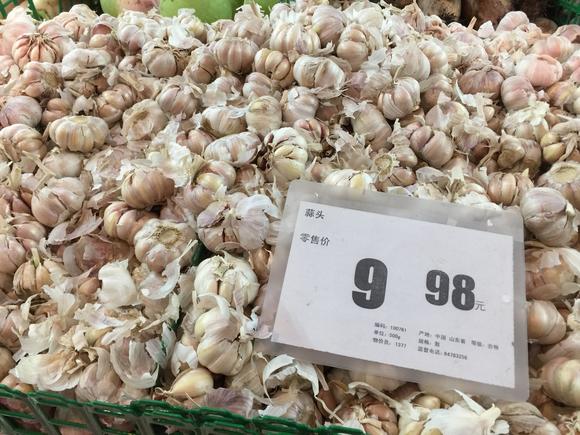Por Imprensa Anapa

Segundo o site Nikkei Asian Review, as autoridades chinesas estão oferecendo subsídios aos agricultores para cultivar e vender mais alhos no mercado, com a esperança de gerar mais oferta e equilíbrio de preço. Enquanto alguns produtores acolhem a medida com otimismo, outros temem que iniciativa só leve a um colapso dos preços no futuro.
As autoridades locais das províncias de Shandong e Henan são as que produzem mais alho na China. O governo está oferecendo programas de seguros subsidiados para os produtores de alho e descontos em empréstimos para comerciantes e processadores. Desta forma, eles esperam incentivar os agricultores a entrar neste mercado em expansão e, assim, impulsionar a atividade econômica.
—
Chinese officials push farmers into garlic
BEIJING — Chinese local government officials are encouraging farmers to diversify into garlic to correct supply shortages that have nearly doubled prices this year. But fears are growing that the growth policy will lead to a glut, followed by a crash in prices, as the market repeats a pattern seen in pork and other foods.
According to government websites, local authorities in Shandong and Henan, China’s major garlic-producing provinces, are offering subsidized insurance programs for garlic growers and loan discounts for traders and processors to encourage farmers into the soaring market, which is boosting local economic activity and raising incomes.
“My observation is that acreage has doubled this season,” said Wu Zhiwen, a college student at Henan University who hails from Zhongmou county, a garlic production center in Henan. Wu said his farming family has planted nothing but garlic this fall.
In Shandong, the amount of land devoted to garlic growing has increased by more than 20% during this year’s planting season, according to the Shandong Provincial Department of Agriculture. Potential production has also increased in less important garlic centers such as Yunnan, the department’s website says.
Subject to China’s winter weather higher production should raise supply in early 2017. The most optimistic scenario is that rising output will calm the market. But commodities traders are already warning of the danger of a sharp price correction as too much output floods the market.
Xiejing Wealth, a commodity-trading platform, also warned recently that many garlic traders share refrigeration facilities and tend to sell their stock simultaneously to reduce storage costs, triggering sudden price fluctuations. The combination of higher supply and volatile prices could be disastrous for farmers.
China has experienced garlic booms before. Between 2009 and 2010 a supply squeeze pushed up garlic prices more than 10 times to roughly 12 yuan ($1.74) per kilogram, according to Wind Data, a Chinese market data provider. Prices dropped by 75% in 2011 as the bubble burst.
“The way this tends to work is that news of a tight supply attracts speculators who try to corner the market and drive the price up,” said Fred Gale, a senior economist at the U.S. Department of Agriculture Economic Research Service. “It tends to happen when there is a lot of money searching for investments.”
Pork problem
In the wake of the global financial crisis in 2008 China implemented an aggressive 4 trillion yuan stimulus program to shore up the economy, with the money supply growing by an annual rate of 28% at the end of 2009, the highest rate in decades.

